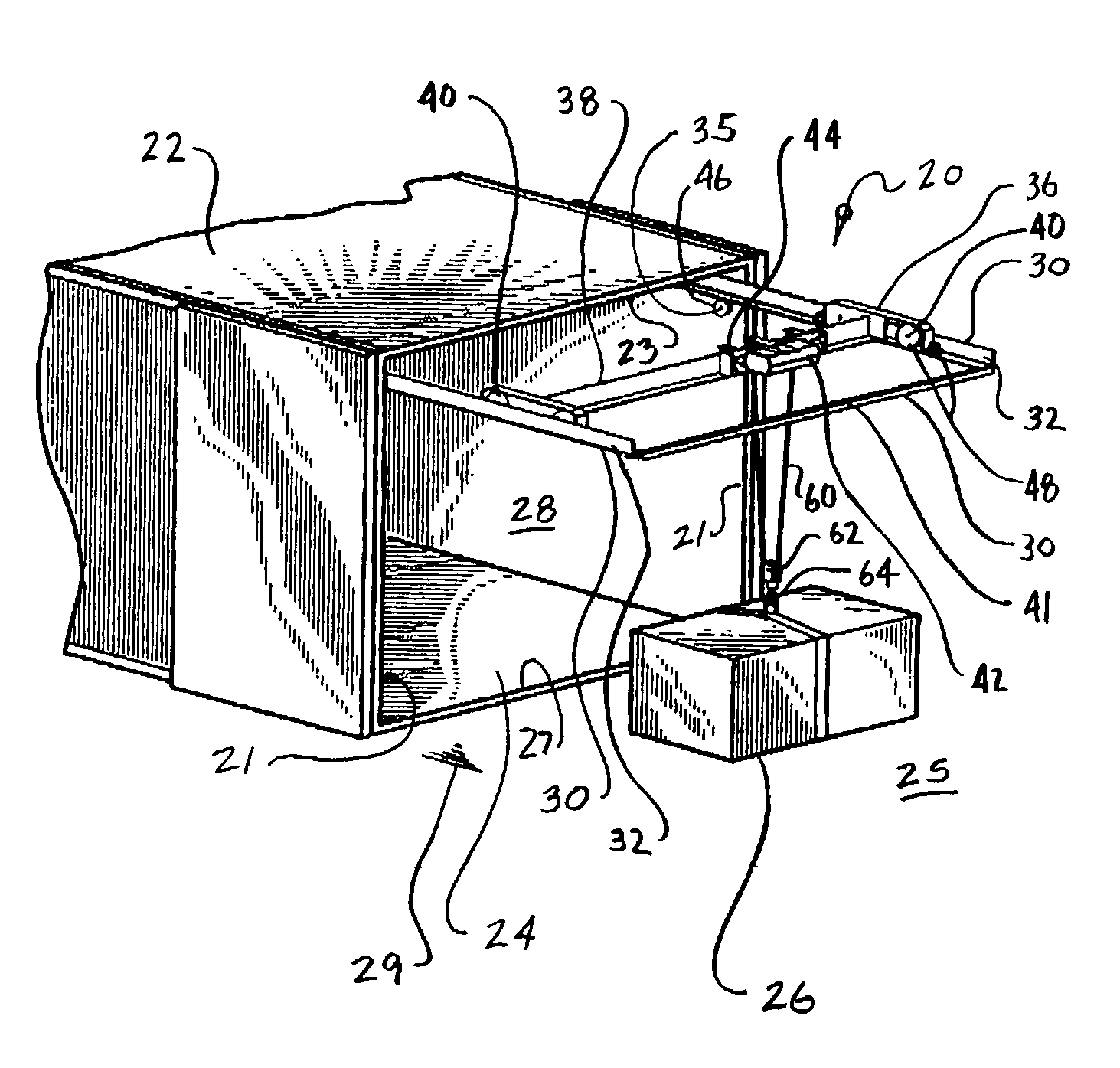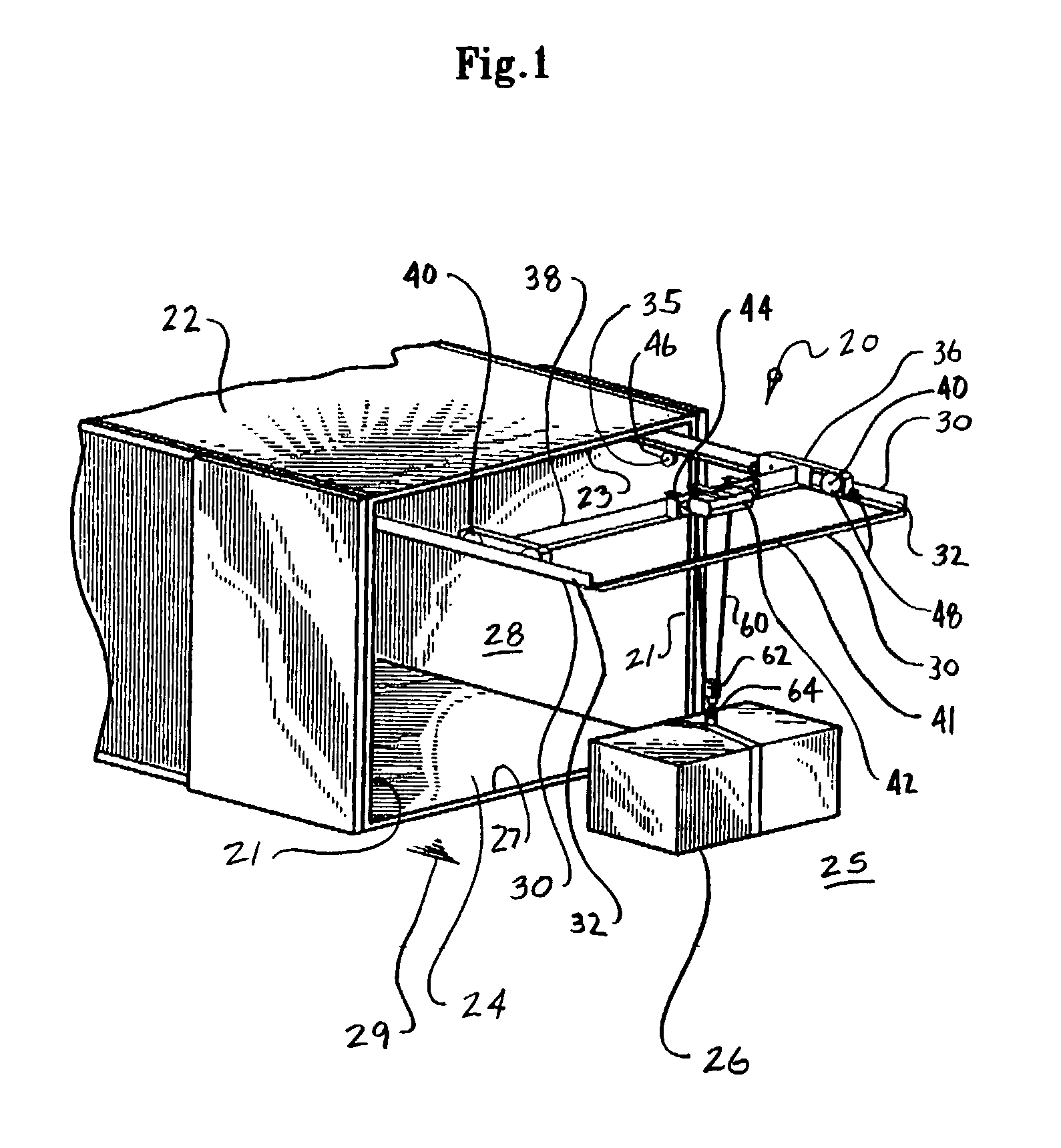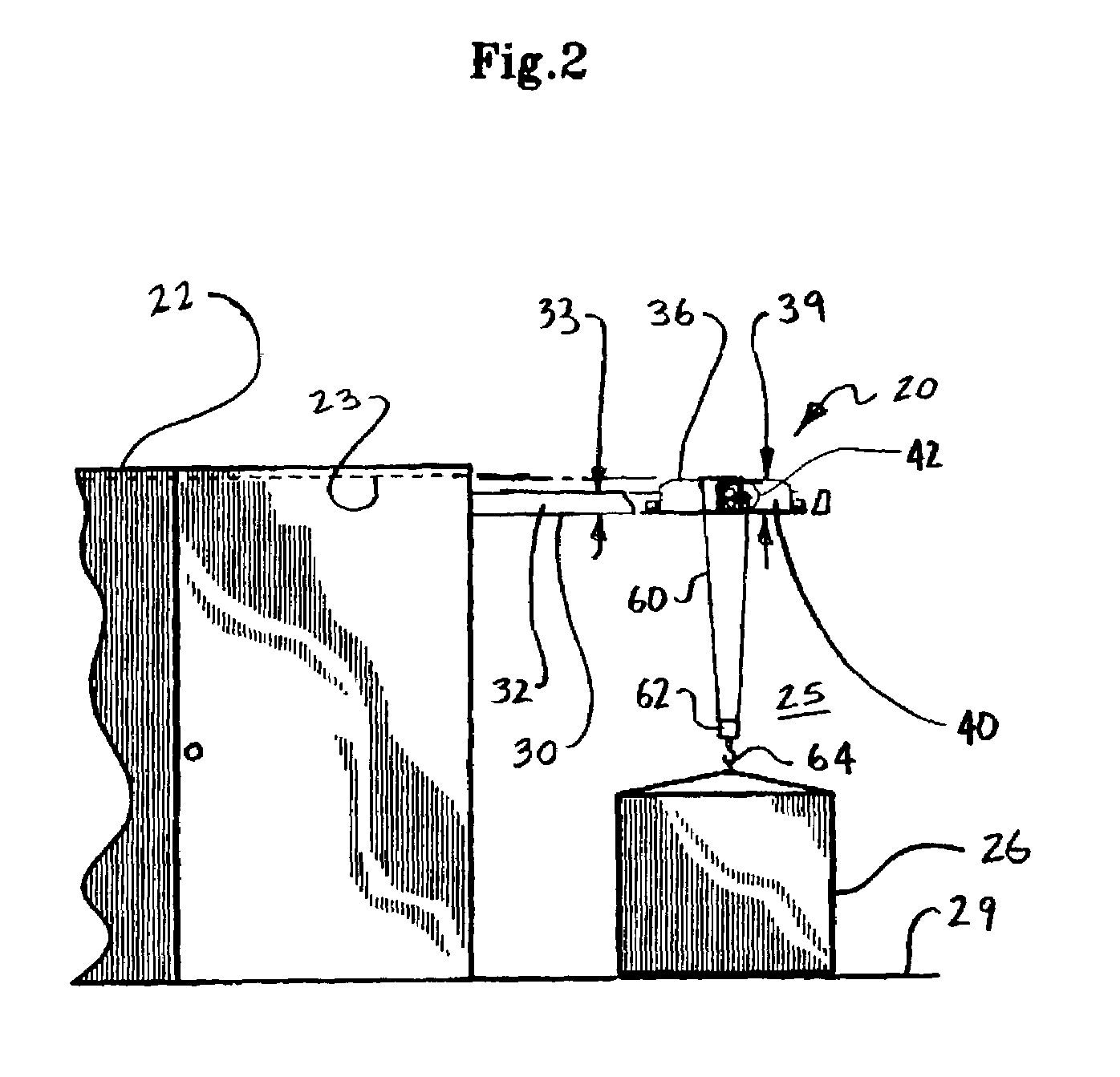Crane hoist apparatus
a crane and hoisting technology, applied in the field of cranes, can solve the problems of inefficient operation of loading and unloading containers, and consuming a fair amount of vertical space or headroom, and achieve the effect of minimising the loss of interior enclosure volum
- Summary
- Abstract
- Description
- Claims
- Application Information
AI Technical Summary
Benefits of technology
Problems solved by technology
Method used
Image
Examples
Embodiment Construction
[0059]With initial reference to FIG. 1, FIG. 2, and FIG. 3 shown is a perspective view of the crane hoist apparatus assembly 20 in use lifting the item 26 adjacent to the containerized cargo enclosure 22, a side elevation view of the crane hoist apparatus assembly 20 in use lifting the item 26 adjacent to the containerized cargo enclosure 22, and a perspective view the crane hoist apparatus 20 respectively. FIGS. 1 and 2 show the first frame 30 in a second extended position to an exterior 25 to relative to the enclosure 22. Although the crane hoist apparatus assembly 20 shows the item 26 being lifted adjacent to the containerized cargo enclosure 22, the crane hoist apparatus assembly 20 is fully capable of retracting completely within the enclosure 22 to allow for placing the item 26 at a selected location within the interior volume 28 in the interior 24 of the enclosure 22. This ability of the first frame 30 to go to a first retracted position in the enclosure 22 by utilizing a sli...
PUM
 Login to View More
Login to View More Abstract
Description
Claims
Application Information
 Login to View More
Login to View More - R&D
- Intellectual Property
- Life Sciences
- Materials
- Tech Scout
- Unparalleled Data Quality
- Higher Quality Content
- 60% Fewer Hallucinations
Browse by: Latest US Patents, China's latest patents, Technical Efficacy Thesaurus, Application Domain, Technology Topic, Popular Technical Reports.
© 2025 PatSnap. All rights reserved.Legal|Privacy policy|Modern Slavery Act Transparency Statement|Sitemap|About US| Contact US: help@patsnap.com



